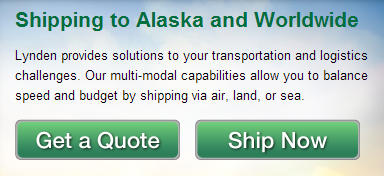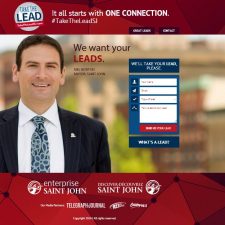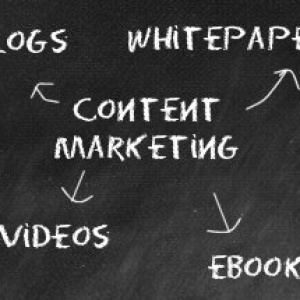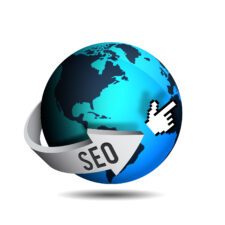 Does it seem like your website should be generating leads, but it’s not?
Does it seem like your website should be generating leads, but it’s not?
Lots of actual traffic to your site, but few of those visitors actually contacting your company?
Sounds like you have a lead gen problem.
Website traffic and visitors are important, but if your goal is to also get leads and sales, you need a website that is optimized for generating leads.
I can tell you, very few websites are.
There are three things you need to do to turn your black hole of a website, into a lead generating machine. Read on to find out what they are!
1. Understand who you’re creating your website for.
As when beginning any marketing campaign, it’s imperative to know who your target audience is.
If you want to create a website that turns visitors into leads, you first need to know who your ideal lead is.
If you’re a B2B company you want to know what type of company she works at, her job role, her challenges, what she needs most, and so on. If you’re a B2C business you’ll need to know things like the gender, approximate age, interests, challenges and lifestyle of your ideal customer.
Knowing who you want to attract will help your company tailor your website, marketing and the very products or services you sell, to his or her needs.
This picture of your ideal customer is often referred to as a Buyer Persona. Our friends at Hubspot have written a great article that will walk you through the process of creating a Buyer Persona. Set aside time with your team to go through this process, it’s important for more reasons than I could cover in this blog post.
2. Relevants Calls to Action (CTA)
A call to action is just about anything that grabs the attention of your ideal customer and urges them to take some action. Such as: subscribe to our blog, request a quote, download a free guide, or sign up for a product demo.
Different calls to action will appeal to different visitors who are at different stages of the sales cycle. For example, a “product demo” call to action will be appealing to someone late in the sales cycle, but not so much to someone who hasn’t even decided that your product is the one they need.
I’ll explain more about why CTAs are important, and how you can use them to generate leads in the next step. But first, here are some screen shots that show what a CTA can look like.
a) Lynden demonstrates a call to action that will capture the attention of a buyer ready to purchase.

b) PrimePay publishes free downloadable ebooks that help their audience solve a problem or offer much-needed advice.

c) River Pools puts this catchy CTA at the top of their home page. They offer all kinds of helpful resources for buyers researching different types of inground pools.

3. Understand that not everyone who visits your website is ready to buy now.
In my line of work I visit a lot of websites. Often the only call to action I find is the “contact us” page, or via a “request a quote” tool.
Let’s analyse this for a moment.
If a visitor to your website is ready to buy, a “request a quote” call to action will most likely grab their attention. For this reason, some version of “request a quote” is a good idea to implement.
But, the reality is, very few of the visitors to your website are actually in the “ready to buy” stage of their buyer’s journey. The rest are still early in the process of doing their research, and figuring out what they need and what their options are.
For many early stage buyers, “request a quote” will be too much of a commitment, they aren’t ready to talk to a sales rep. True, right?
Companies that don’t also serve those buyers in the earlier stage of their journey are letting a large percent of their website visitors fall through the cracks. But it doesn’t have to be that way!
Early stage buyers should still be considered important leads. After-all, if they are actively researching there is a high probably that they will purchase from someone, at some point.
Let’s ensure your company has a chance to stay top of mind!
Important to note here is that we’re not suggesting your sales team should call all of the leads your website generates. Instead, you’ll nurture early stage leads until they are closer to the decision making stage and ready to talk to a sales person.
Nurture??
Yep, so as not to get off track I’ll refer you to a great article by our friends at Hubspot that explains lead nurturing through examples.
OK, back to lead gen. Think back to the ideal lead/ideal customer concept I explained earlier. Now that you know more about your ideal customer, how can you help her while she is still researching options or searching for solutions to her problem?
What sort of “How do I…” or “Is this possible…? questions are people who contact your company asking?
Turning website visitors into leads means giving them high quality, downloadable content that answers their questions. This content is usually an ebook, research paper or how-to guide that is emailed to anyone who would like to read it.
Here is an example:
Your company is a major event planning company in Toronto, Canada. One of your primary customers is the Bride-to-Be. So, for those brides to be visiting your website, you create a free guide: “100 Best Places to Host Your Wedding Reception in Toronto”. You might also create a downloadable tip sheet of “20 Questions Every Bride Must Ask Her Wedding Planner”.
Not only does sharing this type of content allow your company to establish your expertise, and show your personality, it also allows you to have an email in her inbox that she can reference if she wants to hire you… and you have a new lead to nurture.
Wrapping it Up
1. Understand who your ideal customer is.
2. Create relevant calls to action to capture the attention of your ideal customer.
3. Understand that not all visitors are ready to buy. Create helpful, high quality content for these early stage buyers. Your company will continue to nurture these leads until they are closer to the decision making stage of the buyer’s journey.














Comments are closed.